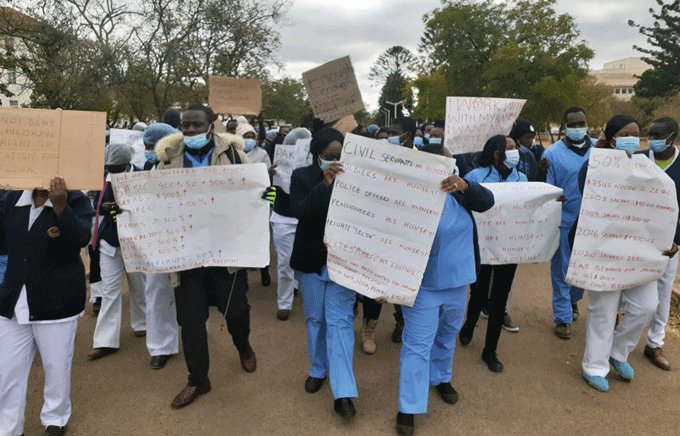|
Getting your Trinity Audio player ready...
|
By own correspondent
This week, Zimbabweans were forced again to grapple with the sad news of industrial action by medical practitioners in the public health sector. The news comes at a time when memories of a story carried in The Herald of 5 September 2019 are still fresh. It was one of the most disturbing stories where a pregnant woman was reported dead together with her child at Parirenyatwa Hospital allegedly due to negligence by medical staff manning the maternity ward.
More often, when people talk about industrial action in the health sector, people tend to look at it from monetary and economic terms without putting a human face to it. The strike by nurses and doctors is just a sign of how Zimbabwe is an inequality-infested country. The stand-off between the government and its medical employees brings to light the realities of ordinary Zimbabweans who are already suffering from various socioeconomic deprivations including hunger.
In a context where income inequality is glaring, it is acknowledged that industrial action is a labour right and a means of redressing income inequality. As such, the responsibility lies squarely with the government to attend to the needs and requests of health care workers which are more than justified given that their demands have been ignored since 2019. It is an undeniable fact that it is the poor and marginalised Zimbabweans who depend more on services provided by the public sector when the rich and elites resort to privatized services.
It however follows that when practitioners in public health institutions engage in industrial action, it is the ordinary Zimbabwean who suffers the most. The most unfortunate part of it is that chaos in the public health sector translates into avoidable death of helpless citizens. The dignity and right to life of ordinary citizens are undermined. What has happened to the constitutional promise of the right to healthcare? Section 76 (1) of the Zimbabwean Constitution declares that “Every citizen and permanent resident of Zimbabwe has the right to have access to basic healthcare services, including reproductive health care services.”
As the sole guarantor of this right, the state must ensure that this right is enjoyed by all and sundry regardless of one’s social status. This is substantiated in Section 76 (2) which obliges the state to “…take reasonable legislative and other measures, within the limits of the resources available to it, to achieve the progressive realization of this right.”
Taking into consideration that a healthy population is essential for sustainable human development and ultimately economic growth and development, a position also recognized in the SADC Protocol on Health of 1999 which Zimbabwe is a signatory, it is high time the government of Zimbabwe considers, in earnest, addressing the challenges bedeviling the health sector including prioritizing the welfare and concerns of the workers. It is a fact that a malfunctioning public health system depreciates the country’s chances of attaining expected outcomes of key economic development blueprints, the National Development Strategy 1 especially those pertaining to health and wellbeing and Vision 2030 included. According to the National Development Strategy 1 Civil Society Monitoring Mechanism (Cisomm) Report produced by the Zimbabwe Coalition on Debt and Development, as of January 2022, the 2021 targets for health and well-being were missed except for life expectancy which is at 61.63 years, slightly above the prescribed target 61.5 years.
A healthy nation is a productive one. It is therefore critical for the Government of Zimbabwe to take sustainable measures to resuscitate the ailing health sector to ensure that quality healthcare is guaranteed to all in line with Chapter 4, Section 76 of the Constitution. This includes motivating practitioners in public health care. If the inequalities in the health sector are not addressed at national level, Sustainable Development Goal 3 of ensuring healthy lives and promoting wellbeing for all, at all ages, will remain a pipe dream.






